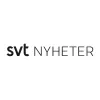Advancements in Wildlife and Livestock Management: DNA Technology and Virtual Fencing
Sweden implements DNA technology for bear population counts and virtual fencing for cattle management, enhancing wildlife and livestock practices.
- • New DNA-based bear population inventory launched in Jämtland and Västernorrland.
- • Virtual fencing systems being adopted for better cattle management.
- • Innovations aim to improve sustainability and efficiency in wildlife and agriculture.
- • Experts highlight the benefits of these technologies for conservation and farming.
Key details
Sweden is embracing technological advancements in wildlife and livestock management through the innovative use of DNA technology and virtual fencing systems. Recent assessments highlight the deployment of DNA-based bear population inventories as well as the implementation of virtual fencing to monitor and manage cattle, with promising implications for both conservation and agriculture.
As part of an upcoming fall hunting season, a new inventory of the bear population using DNA technology is being carried out in the regions of Jämtland and Västernorrland. This method allows for a more accurate counting of bears, minimizing the risks of mismanagement associated with traditional counting methods. "The DNA-based approach provides better data about population dynamics and health, which is crucial for setting sustainable hunting quotas," experts noted, emphasizing the potential of this technology to enhance wildlife management strategies. The results from this inventory are expected to help formulate effective conservation policies moving forward.
In the realm of livestock management, the introduction of virtual fencing technology is proving transformative for cattle ranchers. Virtual fences utilize GPS and radio technology to create invisible boundaries that cattle can identify. Farmers, such as Jörgen Eriksson, are reporting significant improvements in the management of grazing land and animal welfare. "This system not only helps keep the cattle where they need to be but also greatly reduces the need for physical fencing, which can be costly and labor-intensive," Eriksson stated. The adoption of such innovative solutions is increasingly viewed as essential in the face of challenges posed by climate change and land fragmentation.
Both advancements reflect a shift towards more sustainable and efficient practices in managing wildlife and livestock. The use of DNA technology enhances bear population monitoring while virtual fencing offers cattle farmers an effective management tool that conserves resources and promotes animal well-being. As these technologies gain traction, they promise to play a critical role in the future of Sweden’s environmental and agricultural strategies.
This article was synthesized and translated from native language sources to provide English-speaking readers with local perspectives.
Source articles (2)
Virtuella stängsel ger bättre koll på djuren
Latest news
Sweden Poised to Benefit from Record Prize Money at 2026 FIFA World Cup
Financial Crisis Threatens Survival of Swedish Hockey Clubs Västerås IK and Nybro Vikings
Key December Transfers Shake Up Örgryte IS and AIK Rosters
Julia Zigiotti Olme and Yasin Ayari Honored as Swedish Football Association's Midfielders of the Year 2025
Young Stroke Patient's Long Recovery Highlights Healthcare Coverage Challenges in Sweden
Sweden Faces Historic Low Birth Rate Threatening Welfare System
The top news stories in Sweden
Delivered straight to your inbox each morning.

